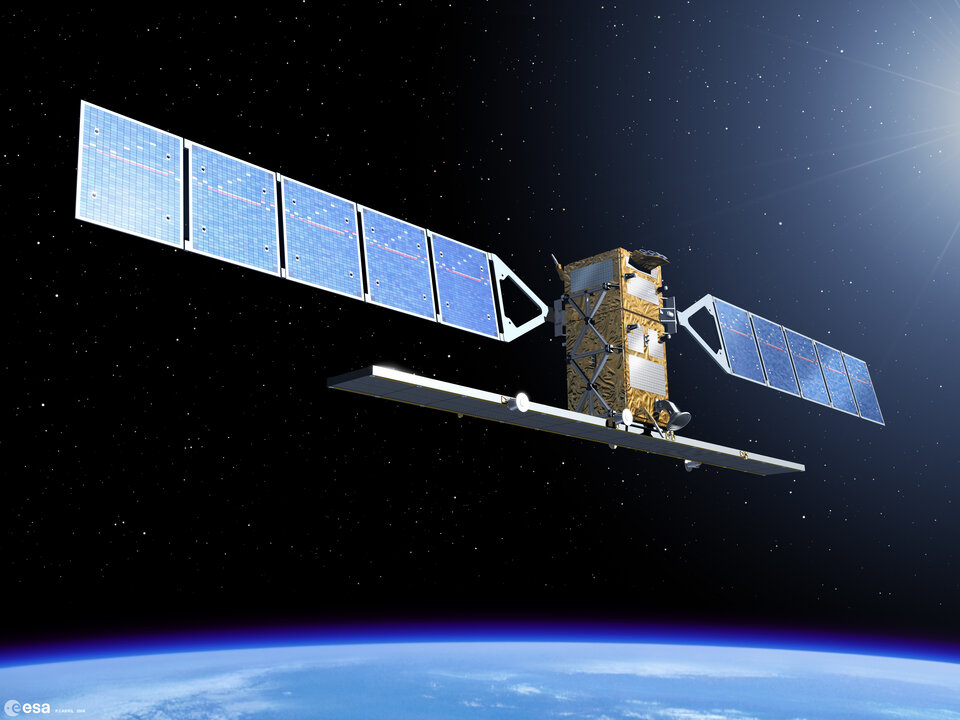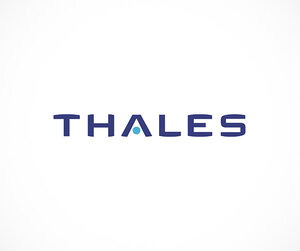Signature secures future Sentinels for GMES
Marking another significant step in the GMES initiative, ESA and Thales Alenia Space recently signed a contract worth €270 million to build the second Sentinel-1 and Sentinel-3 satellites.
Led by the European Commission in partnership with ESA, the Global Monitoring for Environment and Security (GMES) programme will provide a unique tool to monitor the environment. This initiative will fulfil policy-makers' growing needs to access accurate and timely information to manage the environment better, understand and mitigate the effects of climate change, and ensure civil security.
GMES combines data from satellites and information gathered on the ground to form an integrated environmental service facility for the benefit Europe and the international community.
The success of GMES will be achieved largely through its operational 'Space Component', which ESA is in the process of realising. This includes the development of five satellite families called Sentinels. Each Sentinel mission is based on a constellation of two satellites to fulfil the revisit and coverage requirements for the wide range of environmental services that will be made available through GMES.

The first three satellites are under construction, with the launch of the first Sentinel-1 expected to take place in 2012. The contract signed recently between ESA and Thales Alenia Space ensures the procurement of the second Sentinel-1 and Sentinel-3 satellites – or 'B units'.
A reception, attended by Volker Liebig, ESA's Director of Earth Observation Programmes, Luigi Pasquali, CEO of Thales Alenia Space Italia and Enrico Saggese, President of the Italian space agency (ASI), was held today at the ASI's facilities in Rome, Italy, to mark this important milestone in the GMES programme.
"GMES represents a €2.2 billion investment in key space infrastructure. This is not only an extraordinary undertaking, but also an extraordinary responsibility," said Mr Liebig at the ceremony. "The contracts for the B units for Sentinel-1 and -3 will ensure the operational services of GMES for the next 10 years at least."
As prime contractor for the Sentinel-1 and Sentinel-3 constellations, Thales Alenia Space is responsible for the design, development, construction and testing of these satellites. The A and B satellites in each constellation will be identical, and when both are launched each constellation will achieve its full coverage potential.

Sentinel-1 is a C-band imaging radar mission to provide all-weather, day and night imagery for the benefit of GMES services. It will provide information for monitoring of Arctic sea-ice extent, routine sea-ice mapping, surveillance of the marine environment including oil-spill monitoring, mapping of land for motion risks, forest, water and soil management and mapping in support of humanitarian aid.
Sentinel-3 carries several instruments primarily to support GMES services relating to the marine environment. These services include maritime safety services that need ocean-surface wave information, surface temperature and data to improve ocean current forecasting systems, sea-water quality and pollution monitoring requiring advanced ocean colour products and services to monitor land-use change, forest cover, photosynthetic activity, soil quality and fire detection.
With the benefit of Europe's technological excellence, the Sentinel satellites promise to take Earth observation to the next level of operational monitoring to help preserve our environment. With Europe setting the standards, GMES will be the first system to provide the infrastructure and services required to benefit the environment and society on such a large scale. While GMES is still a huge undertaking, the contracts for Sentinel-1B and Sentinel-3B mark a significant step towards realising this European initiative.















 Germany
Germany
 Austria
Austria
 Belgium
Belgium
 Denmark
Denmark
 Spain
Spain
 Estonia
Estonia
 Finland
Finland
 France
France
 Greece
Greece
 Hungary
Hungary
 Ireland
Ireland
 Italy
Italy
 Luxembourg
Luxembourg
 Norway
Norway
 The Netherlands
The Netherlands
 Poland
Poland
 Portugal
Portugal
 Czechia
Czechia
 Romania
Romania
 United Kingdom
United Kingdom
 Slovenia
Slovenia
 Sweden
Sweden
 Switzerland
Switzerland


































